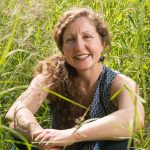Klondike fire crews brace for ‘long fight ahead’
BY ANNETTE MCGEE RASCH FOR THE MAIL TRIBUNE, August 18, 2018
With the Taylor Creek and Klondike fires merged at nearly 120,000 acres — and still growing — many southwestern Oregonians fear the blaze is poised to enter the record books alongside the 2002 Biscuit fire and last year’s Chetco Bar fire.
In an effort to quell that possibility, fire managers brought in reinforcements from California Saturday with the goal of full suppression.
Because of the fire’s size and complex challenges, operations have been split between two teams: Taylor Creek Klondike East based near Selma, and Taylor Creek Klondike West, now headquartered at the Curry County Fairgrounds in Gold Beach.
California’s Interagency Incident Management Team 4 took over operations on the entire west-facing flank of the fire complex Saturday. This team possesses experience with steep terrain and dry fuel types, and plans to go into “full suppression mode” to protect coastal residents.
Klondike fire crews brace for ‘long fight ahead’
BY ANNETTE MCGEE RASCH FOR THE MAIL TRIBUNE, August 18, 2018
With the Taylor Creek and Klondike fires merged at nearly 120,000 acres — and still growing — many southwestern Oregonians fear the blaze is poised to enter the record books alongside the 2002 Biscuit fire and last year’s Chetco Bar fire.
In an effort to quell that possibility, fire managers brought in reinforcements from California Saturday with the goal of full suppression.
Because of the fire’s size and complex challenges, operations have been split between two teams: Taylor Creek Klondike East based near Selma, and Taylor Creek Klondike West, now headquartered at the Curry County Fairgrounds in Gold Beach.
California’s Interagency Incident Management Team 4 took over operations on the entire west-facing flank of the fire complex Saturday. This team possesses experience with steep terrain and dry fuel types, and plans to go into “full suppression mode” to protect coastal residents.
Better Dead than Gone: Rep. Walden pushes for dead tree removal and replanting
By Henry Houston, originally published by Eugene Weekly, August 9, 2018
The state of Oregon currently faces 14 fires, affecting nearly 180,000 acres, according to the National Interagency Fire Center. When the fire season is over, some of what’s left is dead, burned trees.
But what happens to those burned trees?
Eastern Oregon Rep. Greg Walden is urging the U.S. Senate to adopt the House’s version of the 2018 Farm Bill, which would remove burned, dead trees from public lands “while they still have value and replant” forest — just like private timberlands do.
It’s common sense, Walden says, in an email newsletter to constituents.
That’s a problematic strategy, according to Dominick DellaSala, president and chief scientist at Geos Institute in Ashland.
To thin or not to thin: That is the question
By Marc Heller, E&E News reporter | Originally published Tuesday, August 7, 2018 at E&E News.
GROVELAND, Calif. — The Rim Fire, which burned 257,314 acres of forest in 2013, was the biggest wildfire on record for the Sierra Nevada. Forest Service officials declared large areas of the Stanislaus National Forest “nuked” into a “moonscape” where pine trees might not grow back for a generation.
But five years later, Chad Hanson — a forest ecologist who opposes logging on federal lands — can barely avoid stepping on the ponderosa pine saplings that have taken root amid the blackened trunks in one fire-damaged patch of the 898,099-acre national forest. Here, where the Rim Fire burned especially hot, one of the biggest questions about the future of America’s climate-challenged woodlands plays out around Hanson’s ankles: Are forests healthier and safer if humans mostly leave them alone?
The inconvenient truth about forest fires
By Dominick DellaSala, Timothy Ingalsbee, and Luke Ruediger
July 29, 2018, Medford Mail Tribune
It seems like every time there is a forest fire, the timber industry blames environmentalists for a lack of “active forest management” and presumes that contemporary fires have catastrophic ecological consequences. David Schott’s opinion piece in the Mail Tribune July 22 does just that, using the Klamathon fire as an example.
But this fire began on residential land, not in the backcountry environmentalists seek to protect. It made its largest run on private residential, ranch, and timber land, pushed by strong winds. More roads and logging advocated by Schott will not protect communities nor maintain our natural environment.
The forests of our region are some of the most biologically diverse on the planet. Like a phoenix rising from the ashes, fire resets nature’s successional clock from biologically rich old growth to also rich new forest — the circle of life. Fires were historically set by Native Americans to manage culturally important wildlife habitats.
The inconvenient truth about forest fires
By Dominick DellaSala, Timothy Ingalsbee, and Luke Ruediger
July 29, 2018, Medford Mail Tribune
It seems like every time there is a forest fire, the timber industry blames environmentalists for a lack of “active forest management” and presumes that contemporary fires have catastrophic ecological consequences. David Schott’s opinion piece in the Mail Tribune July 22 does just that, using the Klamathon fire as an example.
But this fire began on residential land, not in the backcountry environmentalists seek to protect. It made its largest run on private residential, ranch, and timber land, pushed by strong winds. More roads and logging advocated by Schott will not protect communities nor maintain our natural environment.
The forests of our region are some of the most biologically diverse on the planet. Like a phoenix rising from the ashes, fire resets nature’s successional clock from biologically rich old growth to also rich new forest — the circle of life. Fires were historically set by Native Americans to manage culturally important wildlife habitats.
Central Oregon wildfire season off to busy start
Number of fires in June double from recent years
In a recent interview with KTVZ in Central Oregon, Dr. Dominick DellaSala explains the environmental factors that lead to an increase in potential wildfires.
Central Oregon wildfire season off to busy start
Number of fires in June double from recent years
In a recent interview with KTVZ in Central Oregon, Dr. Dominick DellaSala explains the environmental factors that lead to an increase in potential wildfires.
Walking on the wild side of a snag forest
 This May, Dominick DellaSala was part of a team of researchers and citizen scientists conducting field surveys on the Stanislaus National Forest within the world-class (biodiverse) Sierra-Nevada region of California.
This May, Dominick DellaSala was part of a team of researchers and citizen scientists conducting field surveys on the Stanislaus National Forest within the world-class (biodiverse) Sierra-Nevada region of California.
The trip was on the site of the Rim Fire, California’s third largest in recent history, that burned in 2013 over 250,000 acres bordering Yosemite National Park.
What they found was an ecosystem teeming with life, new growth, and diversity, not a barren wasteland.
Read more about Dominick’s walk on the wild side here.
Why Oregon forests may continue to burn
Last year’s fire season was bad. This year’s could be too. So why does agreement on a plan to reduce the likelihood of forest fires remain elusive?
“We keep hearing that if only we could do active management we could reduce the risk of severe fires,” said Dominick DellaSala, chief scientist at the Geos Institute, a climate change solutions advocacy group based in Ashland. “I heard that continuously when I testified before Congress last September. But when we looked at 1,500 fires, we found it’s the areas with the most active management that had the highest amount of high-severity fires. They wouldn’t believe that data.”
Read the full article by Pete Danko at the Portland Business Journal
Latest News
Stay Updated!
Sign up to stay updated on our current initiatives and receive information you can use to build resilience in your community.
Forest Legacies
This post was created as part of our past initiative Forest Legacies.

 Samantha Medlock is President of Climate Risk Advisors, helping communities and organizations advance equity, sustainability, and resilience. Her career began chasing floods as a local official in Texas Flash Flood Alley—a hands-on experience that still shapes her approach to climate and disaster risk management.
Samantha Medlock is President of Climate Risk Advisors, helping communities and organizations advance equity, sustainability, and resilience. Her career began chasing floods as a local official in Texas Flash Flood Alley—a hands-on experience that still shapes her approach to climate and disaster risk management.
 Arsum is the Senior Adaptation and Coastal Resilience Specialist for the National Wildlife Federation’s Southcentral Region. In this role, she advances climate adaptation efforts, with a focus on nature-based approaches to address the impacts of climate change and extreme events across the Gulf region. She has authored and co-authored numerous publications on climate impact assessments and adaptation solutions. Additionally, she regularly participates in state-based coastal resilience and hazard mitigation planning across the Gulf, collaborating with regional and local stakeholders.
Arsum is the Senior Adaptation and Coastal Resilience Specialist for the National Wildlife Federation’s Southcentral Region. In this role, she advances climate adaptation efforts, with a focus on nature-based approaches to address the impacts of climate change and extreme events across the Gulf region. She has authored and co-authored numerous publications on climate impact assessments and adaptation solutions. Additionally, she regularly participates in state-based coastal resilience and hazard mitigation planning across the Gulf, collaborating with regional and local stakeholders. Frank is the former President of the Reinsurance Association of America. Frank currently serves on the Advisory Board of the OECD’s International Network for the Financial Management of Large-Scale Disasters, the RAND Center on Catastrophic Risk Management and Compensation, and the University of Cincinnati’s Carl H. Lindner III Center for Insurance and Risk Management Advisory Board.
Frank is the former President of the Reinsurance Association of America. Frank currently serves on the Advisory Board of the OECD’s International Network for the Financial Management of Large-Scale Disasters, the RAND Center on Catastrophic Risk Management and Compensation, and the University of Cincinnati’s Carl H. Lindner III Center for Insurance and Risk Management Advisory Board. Jim is a multilingual world traveler. Based in Bavaria during the 1970s, Jim spent most of this period in India, Afghanistan and Nepal, where he founded and operated a charitable medical clinic serving Tibetan Refugees. He settled in Oregon in 1983 on a forested ranch in the Umpqua National Forest.
Jim is a multilingual world traveler. Based in Bavaria during the 1970s, Jim spent most of this period in India, Afghanistan and Nepal, where he founded and operated a charitable medical clinic serving Tibetan Refugees. He settled in Oregon in 1983 on a forested ranch in the Umpqua National Forest. Dr. Micah Hahn is an Associate Professor of Environmental Health in the Institute for Circumpolar Health Studies at the University of Alaska-Anchorage. She received her joint PhD in Epidemiology / Environment and Resources from the University of Wisconsin-Madison and her MPH in Global Environmental Health from Emory University. Subsequently, she was a postdoctoral fellow for the CDC Climate and Health Program, and in this position worked collaboratively with the CDC Division of Vector-borne Diseases and the National Center for Atmospheric Research. Her research focuses on understanding the health impacts of climate change and working with communities to develop locally-relevant adaptation and resilience-building strategies. Dr. Hahn is also on the Management Team of the Alaska Climate Adaptation Science Center.
Dr. Micah Hahn is an Associate Professor of Environmental Health in the Institute for Circumpolar Health Studies at the University of Alaska-Anchorage. She received her joint PhD in Epidemiology / Environment and Resources from the University of Wisconsin-Madison and her MPH in Global Environmental Health from Emory University. Subsequently, she was a postdoctoral fellow for the CDC Climate and Health Program, and in this position worked collaboratively with the CDC Division of Vector-borne Diseases and the National Center for Atmospheric Research. Her research focuses on understanding the health impacts of climate change and working with communities to develop locally-relevant adaptation and resilience-building strategies. Dr. Hahn is also on the Management Team of the Alaska Climate Adaptation Science Center. Michael is a former Founding Principal of Resilient Cities Catalyst, a global non-profit helping cities and their partners tackle their toughest challenges. He is currently the Executive Director of Climate Resilience Academy at the University of Miami.
Michael is a former Founding Principal of Resilient Cities Catalyst, a global non-profit helping cities and their partners tackle their toughest challenges. He is currently the Executive Director of Climate Resilience Academy at the University of Miami. Dr. Quintus Jett is a consultant, educator, and strategist for public causes. He has a doctorate in Organizations & Management from Stanford University, and a two-decade faculty career which spans schools, departments, and programs of business, engineering, liberal studies, divinity, and public and nonprofit management. Following Hurricane Katrina in 2005, Dr. Jett launched a volunteer project in New Orleans, which enlisted residents, students from over a dozen colleges and universities, and hundreds of others to field map the city’s Gentilly district, Lower Ninth Ward, and New Orleans East. Dr. Jett is an innovator in higher education, bridging the divide between academic research and the other priorities of the modern university, including student access and diversity, community engagement, and providing foundations for life-long learning in today’s rapidly changing world.
Dr. Quintus Jett is a consultant, educator, and strategist for public causes. He has a doctorate in Organizations & Management from Stanford University, and a two-decade faculty career which spans schools, departments, and programs of business, engineering, liberal studies, divinity, and public and nonprofit management. Following Hurricane Katrina in 2005, Dr. Jett launched a volunteer project in New Orleans, which enlisted residents, students from over a dozen colleges and universities, and hundreds of others to field map the city’s Gentilly district, Lower Ninth Ward, and New Orleans East. Dr. Jett is an innovator in higher education, bridging the divide between academic research and the other priorities of the modern university, including student access and diversity, community engagement, and providing foundations for life-long learning in today’s rapidly changing world. Scott is Monfort Professor of Atmospheric Science at Colorado State University. He has written about 100 publications in the peer-reviewed climate literature, is a former editor of the Journal of Climate, and served for five years as founding Science Chair of the North American Carbon Program.
Scott is Monfort Professor of Atmospheric Science at Colorado State University. He has written about 100 publications in the peer-reviewed climate literature, is a former editor of the Journal of Climate, and served for five years as founding Science Chair of the North American Carbon Program. Linda has many years of experience in disaster preparedness and resilience. She has been an elected official on the Linn County Iowa Board of Supervisors, Chair of the Metropolitan Planning Organization, the East Central Iowa Council of Governments, the statewide Mental Health Developmental Disability and the Linn County Board of Health. Langston is a former president of the National Association of Counties (2013-2014).
Linda has many years of experience in disaster preparedness and resilience. She has been an elected official on the Linn County Iowa Board of Supervisors, Chair of the Metropolitan Planning Organization, the East Central Iowa Council of Governments, the statewide Mental Health Developmental Disability and the Linn County Board of Health. Langston is a former president of the National Association of Counties (2013-2014). Ken works with families and organizations as a mediator, organizational consultant, trainer and facilitator. Along with his passion for helping people prepare for and reduce climate change, Ken also volunteers as a mediator through Mediation Works and is passionate about supporting youth through mentoring with Boys to Men of Southern Oregon.
Ken works with families and organizations as a mediator, organizational consultant, trainer and facilitator. Along with his passion for helping people prepare for and reduce climate change, Ken also volunteers as a mediator through Mediation Works and is passionate about supporting youth through mentoring with Boys to Men of Southern Oregon. Matthew is a retired high school teacher who was once honored as Oregon High School Social Studies Teacher of the Year. Before his teaching career he was in the restaurant business in Portland. He is also a lawyer who has been a member of the Oregon State Bar Association since 1980.
Matthew is a retired high school teacher who was once honored as Oregon High School Social Studies Teacher of the Year. Before his teaching career he was in the restaurant business in Portland. He is also a lawyer who has been a member of the Oregon State Bar Association since 1980. Andrea is the Resilience Policy Advisor for the North Carolina Office of Recovery and Resiliency. She works across state agencies and with local governments to increase the state’s resilience to the impacts of climate change.
Andrea is the Resilience Policy Advisor for the North Carolina Office of Recovery and Resiliency. She works across state agencies and with local governments to increase the state’s resilience to the impacts of climate change.